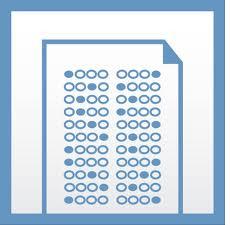Parabolas and fountains definitely seem to go together.
And check out these water parabolas at the Detroit Airport!
Parabolas and fountains definitely seem to go together.
And check out these water parabolas at the Detroit Airport!
 This is a short and engaging little vocabulary quiz from www.sporcle.com titled “F in Math”.
This is a short and engaging little vocabulary quiz from www.sporcle.com titled “F in Math”.
http://www.sporcle.com/games/puckett86/dont_fail
To paraphrase Alex Trebek: all the answers in this quiz begin with the letter F.
If you don’t get a 100, don’t feel bad; one of these answers is a bit obscure. I got it right, but only because a student recently explained that particular concept with me . I didn’t really understand, but at least I remembered the word!
This is a nice introductory video on elementary queuing theory from Bill Hammack, the engineer guy.
http://www.youtube.com/watch?v=F5Ri_HhziI0
Hammack poses a classic queuing theory conundrum: people in a town use phone lines at an average rate of two per hour; how many phone lines should the town have? The naive answer of two lines is far from optimal, because of bunching.
In addition to exploring this basic idea, Hammack also discusses the efficiency of the single-line system (everyone waits in one line for the next available cashier) versus the multiple-line system (each cashier has a separate line). Assuming that delays are distributed randomly among the cashiers, the single-line system minimizes the overall impact of a delay at any one cashier, and so, is more efficient.
And if every individual line has an equal chance of experiencing a delay, it stands to reason that every line has an equal chance of being the fastest. This explains why the other line always seems to move faster: if there are ten lines, you’ve got a 1 in 10 chance of choosing the fastest one, which means 9 times out of 10 a different line is moving faster!
This is a short and readable exploration of the question “What is the shape of the Moon’s orbit around the Sun?”
http://www.math.nus.edu.sg/aslaksen/teaching/convex.html
The Moon makes circles (ellipses, really) around the Earth while the Earth makes circles around the Sun, so what does the path of the Moon look like?
It’s a fun problem to think about, and I encourage you to do just that before you click through and see the discussion.
This simply posed problem touches on polar and parametric curves, 3-dimensional geometry, and of course, astronomy. And naturally there are lots of extensions, like “What if something were orbiting the Moon?”
 I’m pretty sure printer ink is a huge scam to begin with, and stuff like this doesn’t help.
I’m pretty sure printer ink is a huge scam to begin with, and stuff like this doesn’t help.
I went to purchase some ink and looking to minimize my time spent in office supplies stores, I thought I’d buy a two-pack. “We’re out of the two-pack,” the helpful employee said, “but this is the XL. It’s the same price as the two-pack, and it has 3 times as much ink as the single cartridge.”
So after my purchase, I felt compelled to perform a side-by-side comparison.
I’d estimate the XL cartridge to be about 120% the size of the original. But its ink capacity is 350% of the original? That doesn’t seem to add up.